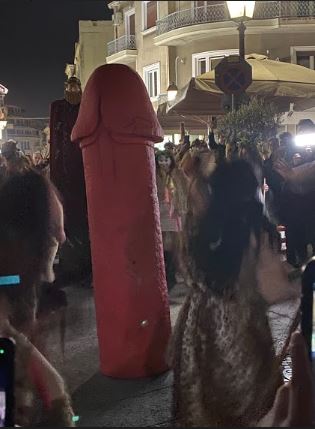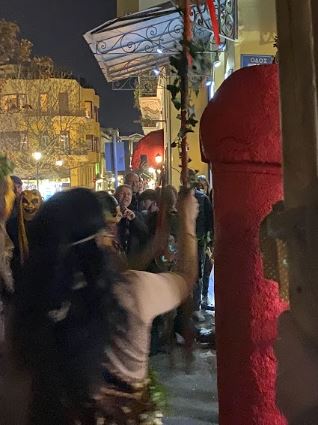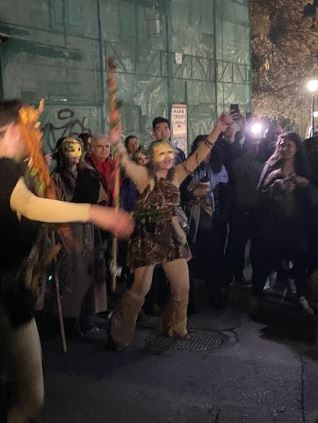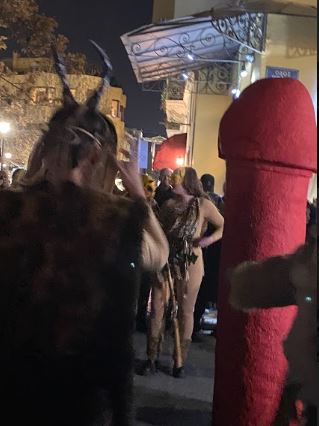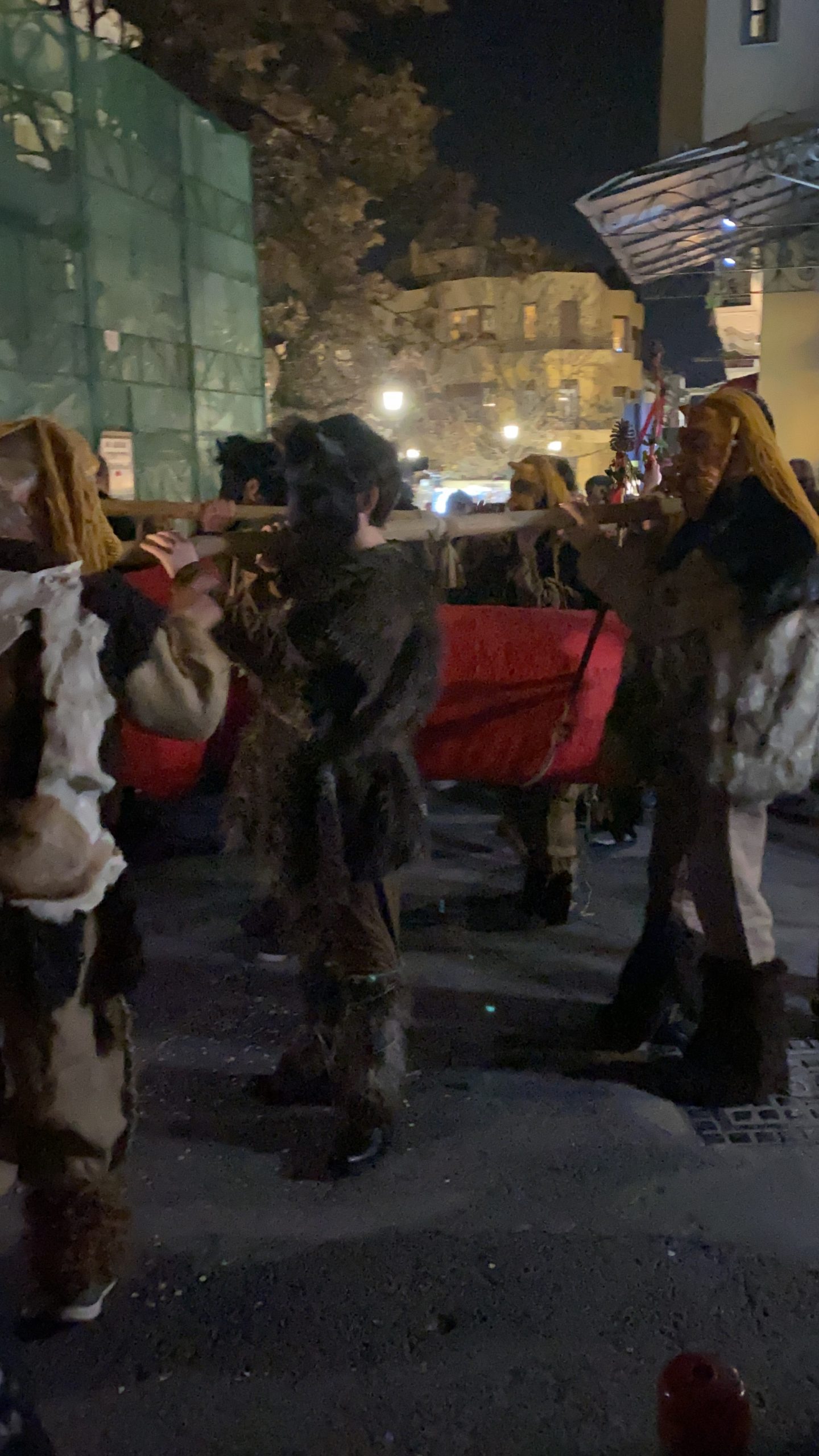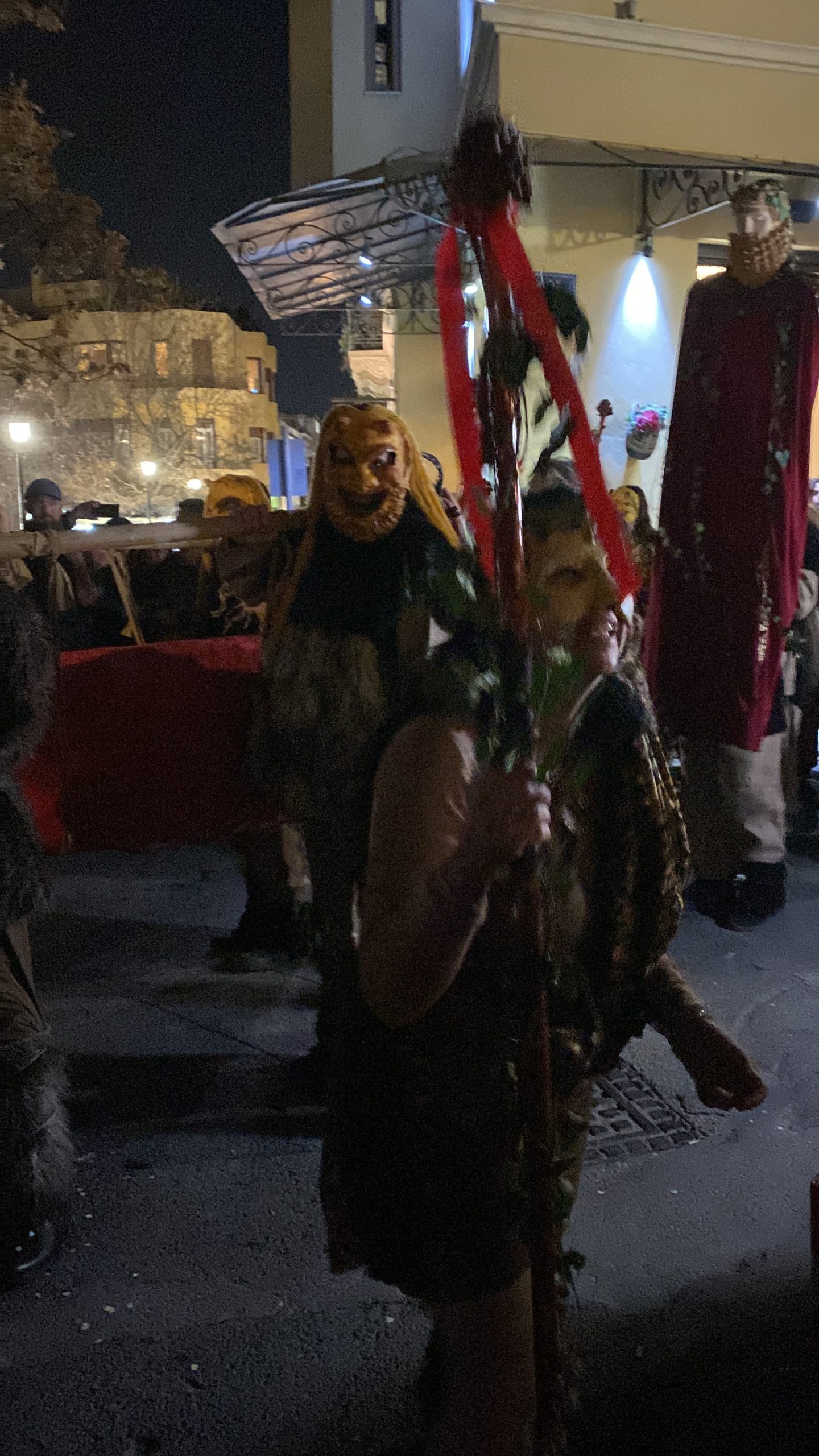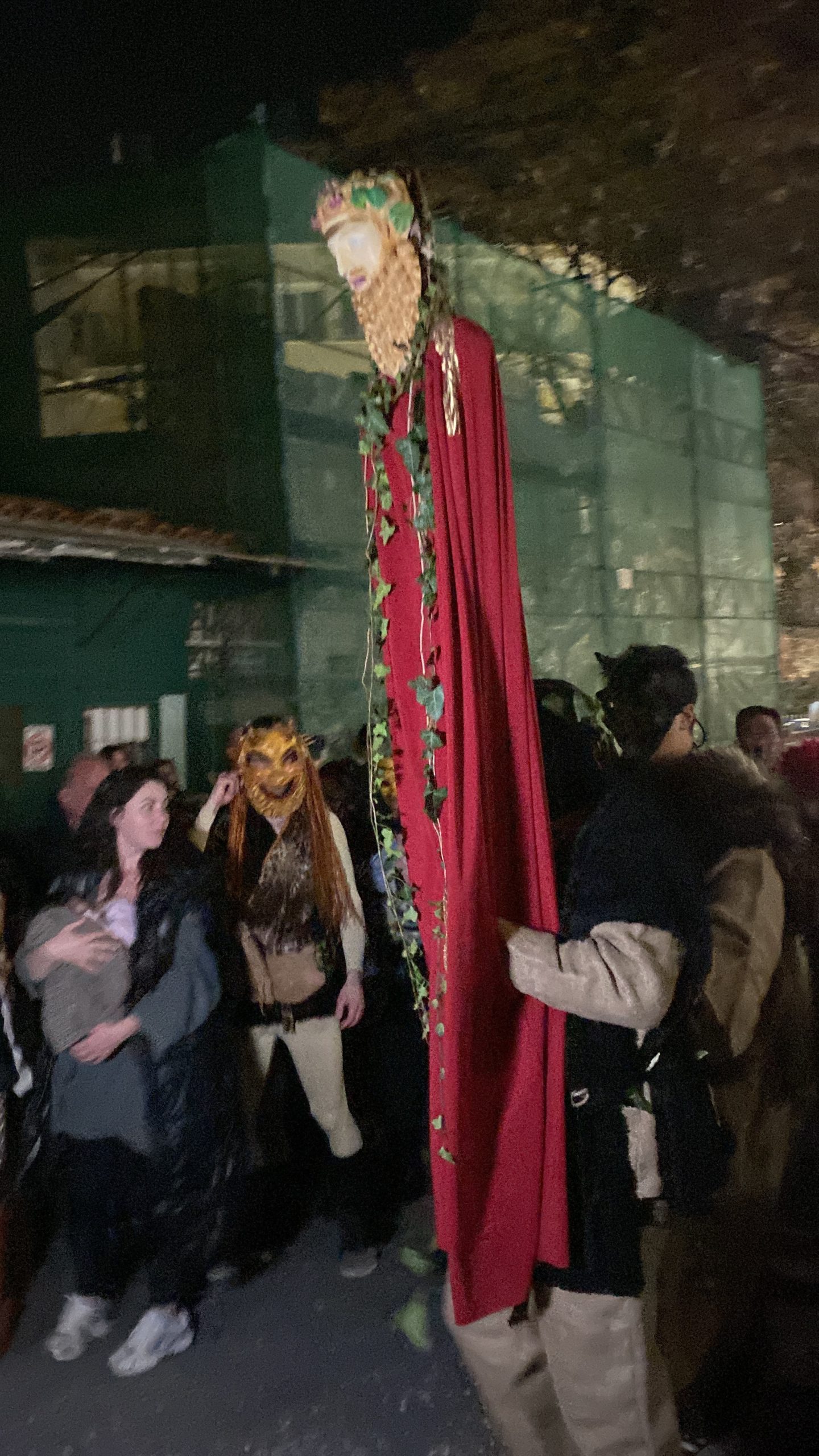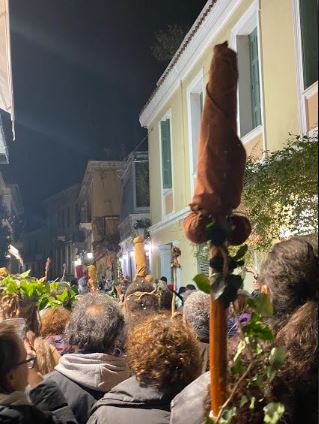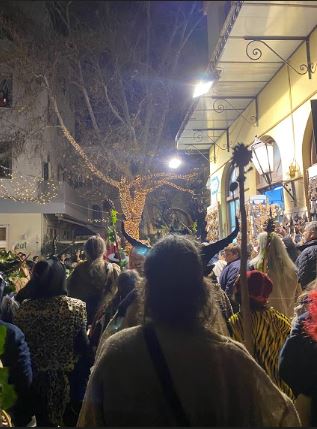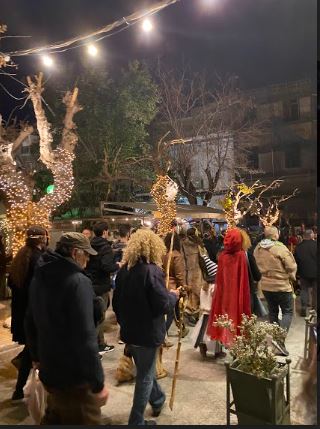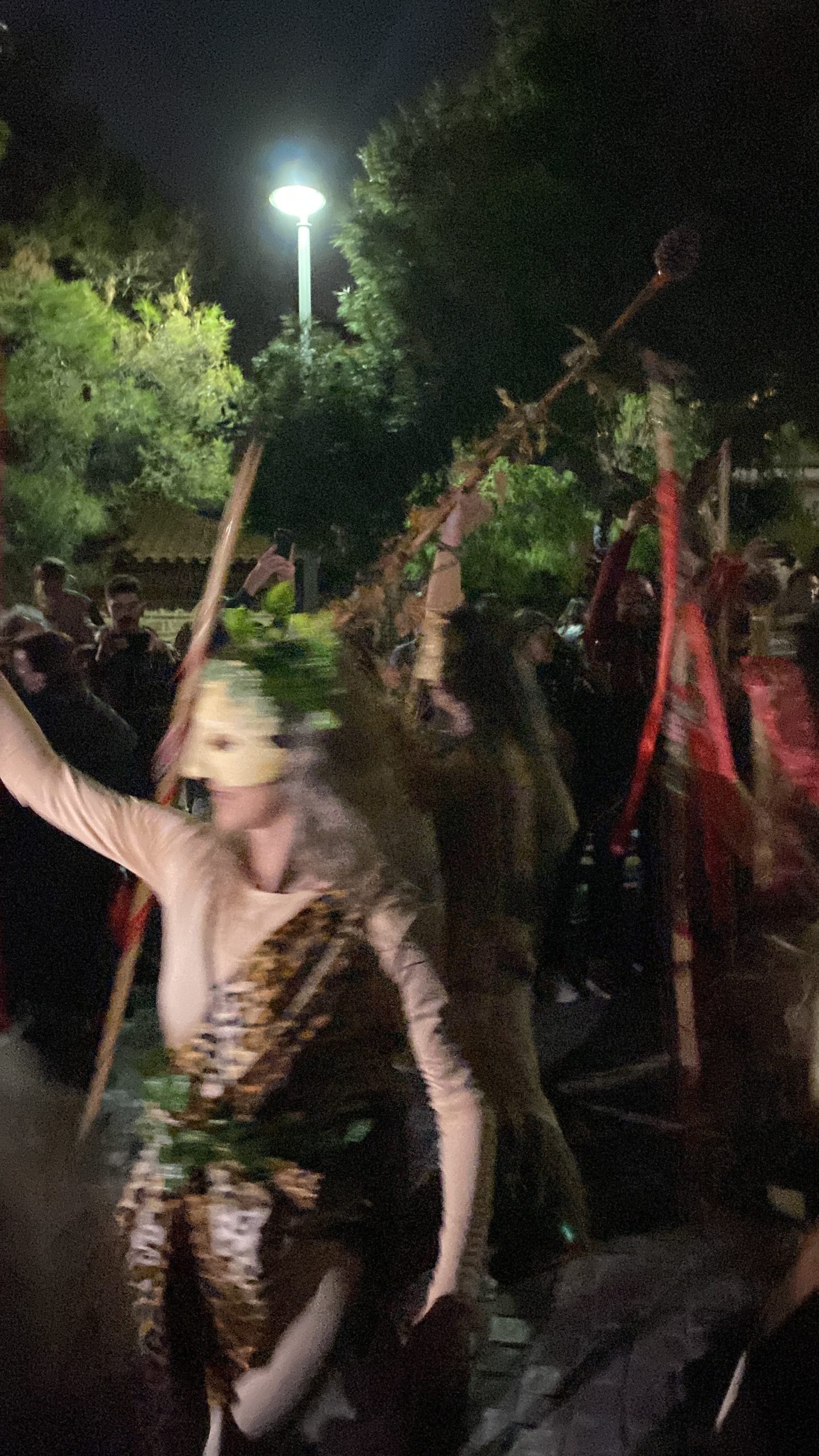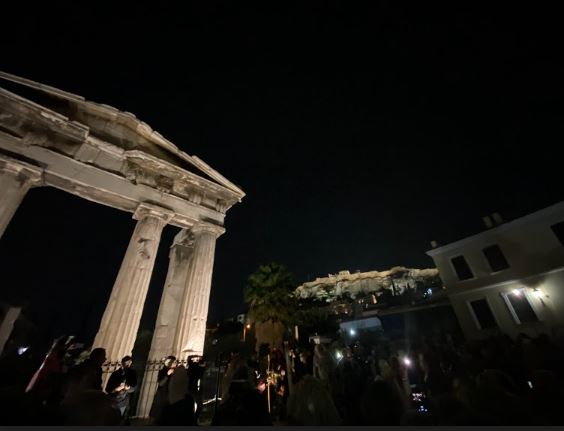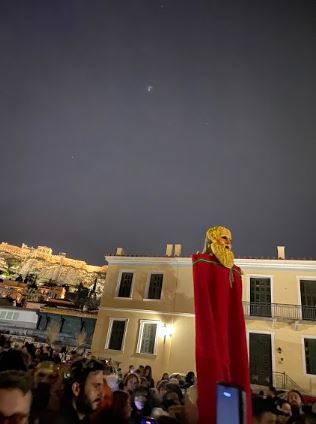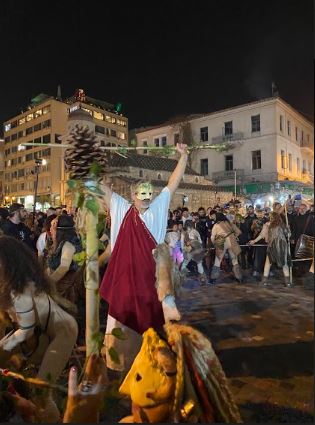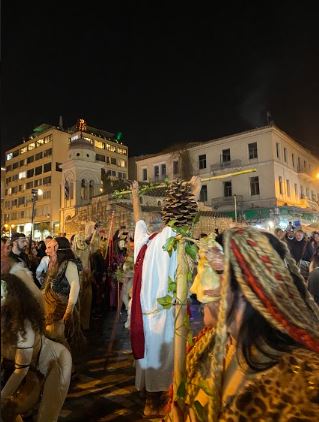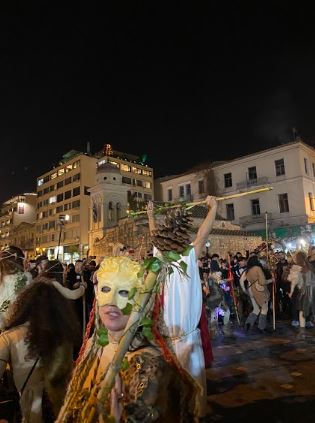
ATHENS, Greece – Drums beat a steady rhythm as a giant red phallus, seven feet tall and two feet in diameter, is carried out into the circle of dancing maenads and satyrs. The dancers leap and screech, mimicking the wild animals whose pelts they wear. Erect phalluses are donned by the satyrs, vines are wrapped around the heads and bodies of participants. As the phallus is lowered onto a platform to be carried at the head of the parade, an effigy of Dionysus is raised high above the heads of the crowd. Thyrsus staffs are held aloft, pulsing to the beat of the drums, following close behind the god’s image.
Falliforia celebrations were held this month in Tyrnavos and Athens in honor of Dionysus, the God of wine, revelry, and fertility. For millennia throughout Greece, the festival has been a time of feasting, dancing, parades, and rituals designed to welcome springtime. Dionysia festivities traditionally lasted for a month, much like Apokries does today, culminating in a Falliforia parade.
In all of these celebrations, participants wore traditional costumes of reverence for Dionysus: women dressed as maenads, the followers of the cult of Dionysus, and men dressed as satyrs, the earth spirits of the Greek forests. Ivy is a sacred plant to Dionysus, so many people wore ivy wreaths or included them on their costumes.
Many also carried the traditional thyrsus, a tall rod made of giant fennel, with a pine cone on the end, and a taenia, or sacred ribbon, tied in a bow below the pine cone. The thyrsus is a symbol of fertility, hedonism, and prosperity, a sacred tool often held by statues of Dionysus. Traditionally, participants would also paint their faces with trygia, the sediment of wine.
Festivities in Athens were hosted by Labrys, a Hellenic reconstructionist group, on February 19th for the eighth year, inviting the public to join in a dedication ceremony to Dionysus before participating in the traditional parade. As a religious group, they began their parade with the phallus ritual described above.
Hundreds of Athenians and tourists watched excitedly (and perhaps with some confusion) as this high-energy, orgiastic parade began. The cries of devotees, the pace of the parade, and the speed of its movement through the streets were ecstatic. Satyrs climbed street lamps, and maenads lept joyfully through the crowd, clinging to each other in fits of rapturous laughter. Many carried bells, and drums were played in this fast-moving ceremony through the moonlit ancient streets of Athens.
Ecstatic dancing and comedic performances were seen as an act of catharsis. Dionysus’ epithets as Liberator, Eleutheros (Ελευθερευς), and Uniter/Resolver, Lisios (Λυσιος) are honored in these festivals as participants release the fears of winter and embrace the fertility of spring.
On February 25th, the sixth annual Falliforia parade was held by Falliforia, an Athens-based organization dedicated to putting on a non-religious version of the festival for the public. Appropriate for the god of theater, this event was less participatory and more performance-based.
Hundreds of participants joined the audience to watch the festivities. Around twenty maenads and satyrs danced, led by a leader dressed in traditional ancient Greek robes and carrying a thyrsus, to act as Dionysus’ master of ceremonies.
At the junction of the Temple of the Eight Winds in front of the Acropolis, with the Temple of Athena lit on the mountain behind, the parade halted for a comedic performance. Lude jokes and skits were performed by masked actors playing old women, a tradition going back centuries.
The parade ended with a long dance of the Cordax (Κορδάκας), thought to be a reconstruction of the ancient dances to Dionysus. The songs played, as well, were written in ancient Thrace, a northern region of Greece that today also encompasses parts of Bulgaria and Romania.
Falliforia is a parade and feast with roots and connections to Pan, the God of the Forest. Usually shown as a satyr with a reed flute, Pan is closely linked to Dionysus as a fertility god and a representative of nature’s male energy. Historically, the rural festivities had a particular connection to a ritual ensuring the health of the grape vines, although it evolved to become a general fertility and abundance celebration at the coming of spring each year.
Today the Falliforia is celebrated in Athens and other towns across Greece, but perhaps nowhere takes its Pagan roots as strongly as Tyrnavos, a town outside of Larissa in northern Greece.
In Tyrnavos, Falliforia lasts an entire month. And the festivities have a decidedly pagan feel to them: Falliforia means “to carry a phallus”, and that is just what they do in Tyrnavos. With brief missed years due to political disruptions, since 1898 the people of Tyrnavos have created and carried with honor ceramic phalluses throughout the streets of the town.
The people of the town carry, wear and decorate clay phalluses. In past years, phalluses have been used as bottles for tsipouro, a locally-made liquor, and burani, a traditional spinach and rice dish is served. The focus of these activities is to give thanks for the fertility of the land, and in that spirit, it is expected, in Tyrnavos particularly, that participants kiss a phallus, for which they are rewarded with ash streaks on their face – perhaps a remnant of the trygia wine sediment tradition.
This was the first year for these festivals in Greece since the COVID-19 pandemic began in 2020, but they haven’t missed a beat (literally: the drums were on point!) If the massive turnouts are any indication, the people had missed their rites of spring, and dedication to Dionysus this year was perhaps all the stronger for it.
The Wild Hunt is not responsible for links to external content.
To join a conversation on this post:
Visit our The Wild Hunt subreddit! Point your favorite browser to https://www.reddit.com/r/The_Wild_Hunt_News/, then click “JOIN”. Make sure to click the bell, too, to be notified of new articles posted to our subreddit.
